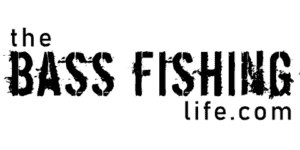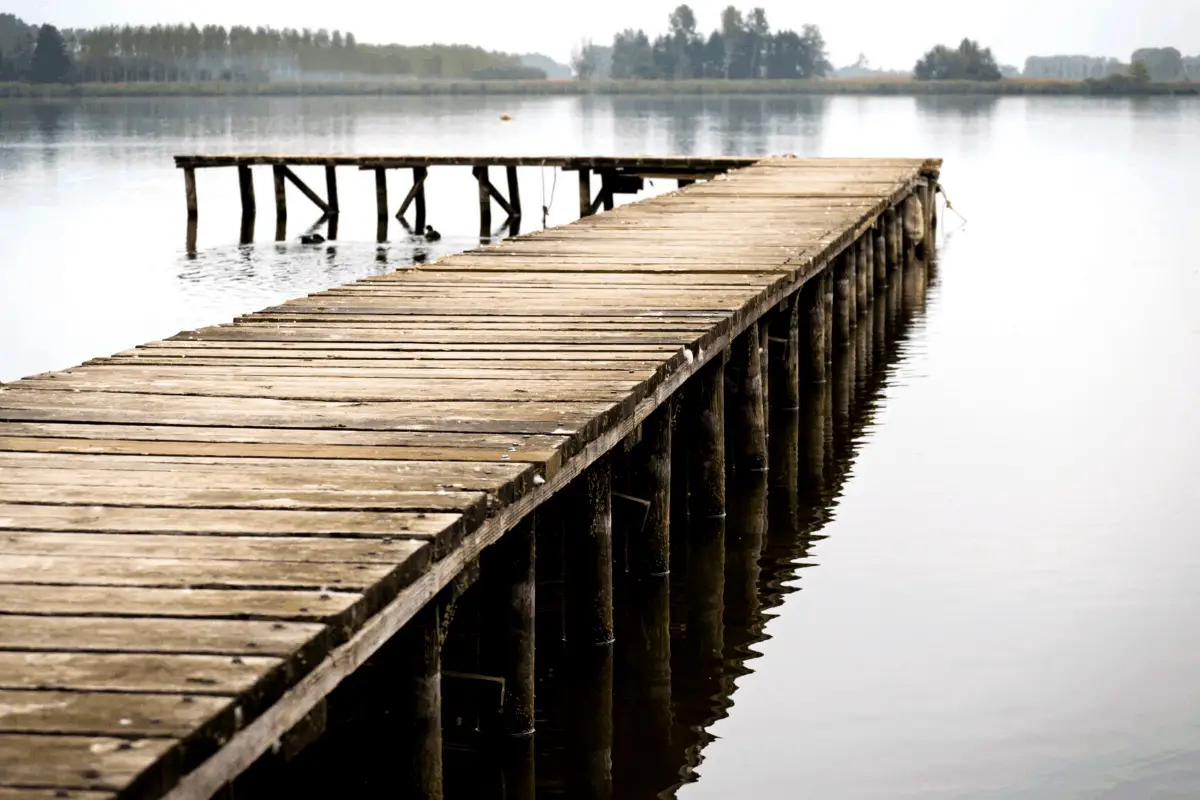Docks are present on almost every body of water. These manmade structures have the potential to hold big bass, but not every dock is created equal.
To find the best docks that have the possibility of holding the biggest bass, there are some key characteristics to look for. Find docks that are positioned with deep water access and other forms of intersecting cover – like vegetation or brush piles. Present lures to shadiest portions of the dock and odds are you will find some good bass.
In this article, I will discuss the ten best tips that I know to help take your dock fishing to the next level.
1. What is the Structure Under It?
It is important to define the differences between cover and structure.
Structure refers to the bottom composition of the lake or river – the actual geographical features that make up the body of water. Cover is anything that is sitting on that structure.
A dock is an example of cover sitting over structure.
The lake or river bed under the dock is the primary indicator as to how productive that dock may be.
Is the dock sitting on a point? Is there rock under the dock or is it mainly mud? Does the dock sit over an old creek channel?
Focus on the topography of the lake or river bed first. If the area appears to be a high-percentage location without a dock, the presence of one will make the area even better.
2. Shade
The primary drawing power of docks are the shade that they create.
Making your first cast to the shadiest section of a dock is always a good choice. As the sun moves across the sky, the shade will naturally move.
Outside pilings may be the ticket during lowlight periods or first thing in the morning, but skipping a lure twenty feet under a walkway may be the most opportune presentation at high noon.
Bass anglers that focus on the shade are always going to be dropping those lures in high-percentage locations.
3. Docks that Intersect Something
Like other key areas, a dock is most prone to holding quality fish if it intersects another form of cover.
Is there a pad field nearby? Does a riprap shoreline run behind the dock?
Creatures love edges and this pattern holds true on docks as well. Think about those places where natural intersections occur and then find that shadiest place at that transition zone.
The recipe for success is right there.
4. Clues for Brush Piles
There are many docks that will have brush piles located near them.
Anglers that own docks like to have the option to sit and catch fish right from their own property. Locating brush piles in key locations where folks sitting on the dock can cast to them is something to not forget about.
As you approach a dock, check for rod holders screwed to the planking. Do you see chairs and benches permanently fixed somewhere?
Is there a vapor light sitting in one location but not another?
These are all indicators that there may be a brush pile within casting distance of the dock.
I also like to focus on the oldest and most dilapidated docks I can find. These gems are more likely to have brush sunken around them that a brand new structure with a $200,000 runabout tied to it.
With the electronics attached to most boats having side-imaging, locating brush on docks is easier now than ever before.
5. Deeper Water
Not all docks will hold bass. In fact, some may never hold a fish while others seem to keep lunkers near them all year.
A major factor is the access to deeper water.
Docks sitting an expansive flats with no contour change are less likely to hold bass than a dock that drops to fifteen feet of water.
This concept goes right back to the idea of looking at the type of structure that is under a dock. If the bass have quick access to deeper water, that is a dock that may just hold fish most of the year.
6. Skipping Lures – Pitching Jigs
The ability to skip, or pitch, lures way under docks is a key ingredient to becoming a master dock angler.
While there are docks that are small and easily picked apart, there are others that are quite expansive and have huge decks that provide big bass the chance to swim way under them.
If you are not familiar with skipping jigs, especially with baitcast equipment, no worries – here is an article that covers the topic in-depth.
Having the confidence to place a lure twenty feet under a dock will pay off many times throughout your fishing adventures.
Why?
There are not that many anglers that take the time to learn the skill. You may just be presenting a jig to bass that rarely see a lure.
When selecting a jig, or soft plastic, to skip and pitch under docks it is best to choose a model that has some weight to and is also compact. A ½ oz jig with a bulky, yet compact trailer, is the right combination to put that lure way under a walkway or float.
7. Ambidextrous Casting can Make a Huge Difference
As anglers work through and around a boat dock, there are many times when it is difficult to make a presentation with our dominant arm.
Practicing with the opposite arm will make fishing docks much more efficient and allow anglers to present lures at the proper angles. This practice directly translates to more bites, more bass, and bigger bass.
Like skipping and pitching jigs, this does take practice, but not as much as one might think.
In just a few outings, you will be surprised how much improvement there will be. It is a great feeling to approach a dock and use the subdominant arm to make a perfect pitch that results in a big bucketmouth being hauled to the boat.
8. Boat Positioning
This might be one of the single most important aspects of dock fishing.
Taking a few seconds to make sure that the boat is in the proper position to hit the high percentage areas will result in exponentially more bites.
This includes pointing the bow of the boat into the wind, keeping the proper distance and not blasting the underside of a dock with prop wash from the trolling motor.
For those anglers that have GPS anchoring electric motors or shallow water anchors, holding the boat in the proper position can be much easier. This is especially true on days with heavy boat traffic or gusting winds.

9. Bass Often Suspend on Dock Pilings
While bass will hang right under a dock or sit tight on the bottom, there are still plenty of times when these predators will suspend part-way down a dock piling.
Targeting these fish is slightly more difficult than the others, but still possible.
When fishing lures that drop vertically, it is important that they fall on a slack line. A jig, or Texas-rigged soft plastic that falls straight down will elicit many more bites than one that is falling on a pendulum motion.
If necessary, feed slack to the lure if it is being fished on a dock that is sitting over especially deep water.
Watch the line carefully. If a bass inhales the lure, you may not feel a bite at all, but instead just notice that the lure stops sinking before it should.
Set the hook. A fish may have it and is not moving.
If you want to fish lures horizontally for suspended fish, practice counting down the lure to get to the depth that you wish to target.
Flutter spoons are also excellent options for getting suspended bass to bite that are sitting under docks.
10. Usually the Bite is Pretty Quick
When fishing docks, the bite on any particular cast will usually happen within a few seconds. There is no need to work the lure a long time.
Pitch the lure, let it sink, hop it a couple of times on the bottom, then reel it in and make another precise presentation.
Incorporating a high-speed reel when dock fishing will help make many more casts over the course of the day.
When fishing the back side of docks sitting over shallower water, be ready for the bite to happen almost instantly.
Final Thoughts
Targeting docks on any body of water is a great place to start looking for bass.
Focus on the topography under the docks and other elements like intersecting types of cover and anglers are well on their way to unlocking the best of dock fishing.
Using the right lure to pick apart key docks will be something that you enjoy for many years.
Tight lines. Be safe and make sure to encourage someone today. You never know how you may change their life forever.
Isaiah 6:8

